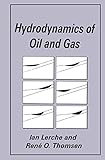Hydrodynamics of oil and gas Libro electrónico Ian Lerche, René O. Thomsen
Tipo de material: TextoIdioma: Inglés Detalles de publicación: New York, New York, United States Plenum Press c1994Descripción: xii, 308 páginas ilustraciones 24 centímetrosISBN:
TextoIdioma: Inglés Detalles de publicación: New York, New York, United States Plenum Press c1994Descripción: xii, 308 páginas ilustraciones 24 centímetrosISBN: - 0306448726
- 9781489913036 (Print)
- 9781489913012 (Online)
- Disponible en línea
Incluye bibliografía e índice: páginas 301-303
1. Introduction.. 2. Hydrodynamics of thin oil stringers.. 3. Generalization of Hubbert's conditions.. 4. Steady-state oil stringers in capped aquifers.. 5. Finite-width aquifers.. 6. Variable-width, constant-angle aquifers.. 7. Fixed-width, variable-angle aquifers.. 8. Effects due to variable permeability.. 9. Saline and fresh water flows.. 10. Dynamical aspects of permeable flow.. 11. The inverse oil/gas stringer problem.. 12. Migration and diffusion of hydrocarbons in complex stratigraphic sequences.. 13. Research thrusts and cross-discipline ties.. Index
Disponible para usuarios de ECOSUR con su clave de acceso
There has long been interest in the flow of fluids through permeable aqui fers. Stratigraphic trapping of oil and gas by permeability changes in an aquifer and the amounts of hydrocarbons so trapped are major concerns to the oil industry. The variations of aquifer width and geometry and of the positions in an aquifer where hydrocarbons can be trapped by hydro dynamic forces are intimately intertwined in determining the shape, and thus the volume, of hydrocarbons. Perhaps the seminal work in this area is reflected by King Hubbert's massive review paper "Entrapment of Petroleum under Hydrodynamic Conditions" (Am. Assoc. Pet. Geol. Bull. 37(8), 1954-2026, 1953), in which a wide variety of effects, such as capillarity, buoyancy, surface tension, and salinity of water, are incorporated as basic factors influenc ing the positioning and shaping of hydrocarbon masses in hydrodynami cally active aquifers. In those days, while the basic physics could readily be appreciated, development of a detailed quantitative understanding of the interplay of the various factors in controlling or modulating hydro dynamic shapes was severely limited by computer abilities. Indeed, Hub bert actually constructed and photographed physical models, using alcohol and water, to illustrate basic concepts. It is difficult to obtain an appreciation of the behavior of flow geometries from such experiments when all factors are permitted to vary simultaneously. Inglés
Disponible en línea
Disponible en formato PDF


